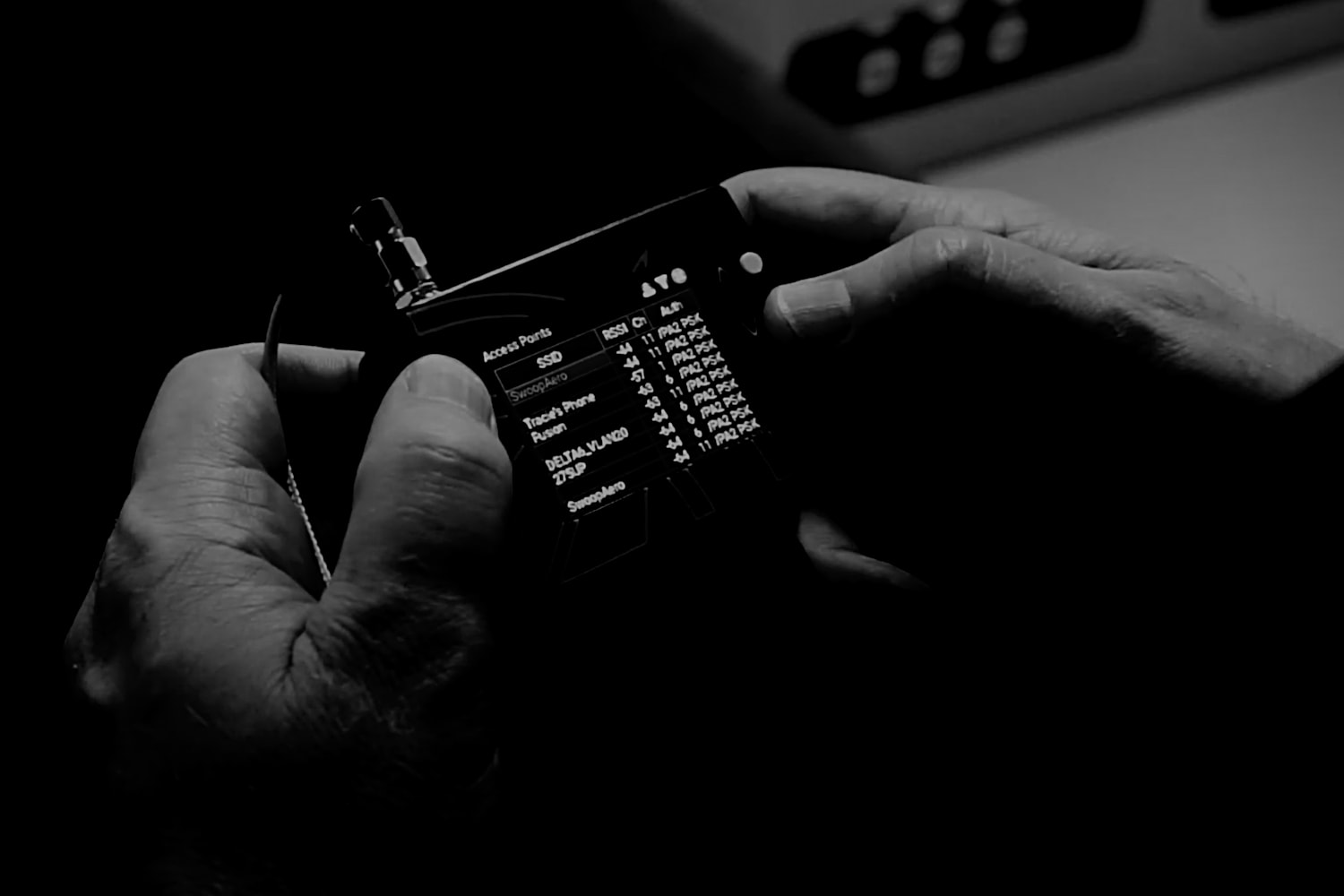
26 Mar HackHunter Stomps Out Wi-Fi Breaches
Hot Australian cybersecurity startup expands its reach to the U.S.
Melbourne, Australia – Mar. 26, 2021
For all its benefits — and its ubiquity in today’s mobile-centric work — Wi-Fi has also been something of a security nightmare. Its broad reach, an intentionally promiscuous design that facilitates access point discovery, and the breaching of near-ubiquitous WPA2 security have all fed a challenging security profile that may mean you don’t even know your Wi-Fi has been hacked.
Throw in the confounding effects of the COVID-19 pandemic — where home networks became de facto extensions to fragmented corporate network perimeters – and overall exposure to man-in-the-middle attacks, derivation of encryption keys through passive data collection, and other Wi-Fi attacks has increased dramatically.
Wi-Fi security breaches are being reported related to everything from hidden Wi-Fi cameras in hotel rooms and boardrooms, to hackers diverting users to malicious rogue access points and “evil twins” using the same access credentials but a much stronger signal strength that drowns out the original.
These changes are “creating new vulnerabilities within organizations that, in many cases, are not being addressed,” said Tracie Thompson, CEO of security startup HackHunter — an Australian company that has rapidly moved into the U.S. market on the back of a novel handheld device designed to locate and determine whether any given Wi-Fi access point is behaving in a malicious way.
Thompson and her husband Mike — a 25-year security industry veteran and software developer — worked together for over 15 years in a previous security business before they sold up and decided to “work out what would be the next big thing.”
Mike’s increasing interest in Internet of Things (IoT) devices, including years of “using our home as a guinea pig,” led them to a business idea: “We were looking for a way to combine his experience in cybersecurity, my experience in running the previous business, and the IoT,” Tracie recalls.
Finding the gaps
The resulting product — a handheld Wi-Fi sniffer called Pursuit capable of not only finding the physical location of an access point but also sniffing up to 20,000 packets per second of data to determine whether it is undertaking malicious activity — was largely developed during the COVID pandemic and debuted at the end of 2020 to strong interest.
The Thompsons’ invention has tapped a vein of demand that is, with support from industry-development firm AustCyber, rapidly turning the pair’s idea from a flight of fancy into a global market disruptor.
Early testing within a major listed Australian company identified three potentially malicious access points — including one hidden in a bag and another that had been installed under the floor — while a trial with a large U.S. defense company has opened up new avenues into the North American market.
“We’ve spoken to finance companies, multi-nationals, government departments, and U.S. defense primes,” Tracie said, “and they’re all worried about the same thing: ‘what is in my Wi-Fi environment?’”
That feedback is a vindication for an idea that evolved from an issue that they had found all too frequently in their years auditing customers’ network environments: “When we were doing vulnerability assessments,” she said, “it was really clear to us that most organizations don’t really know what unauthorized Wi-Fi is in their environment. And if they do know, there’s no easy way for them to find the source.”
Companies suspecting malicious Wi-Fi access points may have been installed would typically have to call in experts with suitcases full of specialized equipment, who would scan for telltale signs of infrared camera sensors or unusual electromagnetic emissions.
Network-based security mechanisms were often ponderous, with router-based security features hitting router performance “dramatically.”
“In one case,” she said, “we know the network area told the security area they weren’t allowed to use security features because it basically stops the routers from working.”
Even finding the devices can be time-consuming and harder than one might expect, Thompson said, even where specialized equipment is able to triangulate an approximate location.
Even where devices can detect unauthorized Wi-Fi units because they’re not on a whitelist, she said, that information ultimately ends up in the log for analysis after the fact — and can’t tell the owners whether the Wi-Fi is malicious.
HackHunter’s product portfolio also includes fixed Wi-Fi monitoring systems and a device for detecting drone-related Wi-Fi signals — reflecting its creators’ technical prowess and the industry’s evolving recognition that the ubiquity of Wi-Fi poses ongoing cybersecurity threats for companies of all industries and sizes.
With the company primed to capitalize on its growing momentum, Tracie says the spirit of close collaboration has kept its technical experts engaged — and validated a corporate culture focused on identifying and solving security problems that many companies didn’t even know they had.
Mike and his technical peers “will tell me there’s a particular hurdle they have to investigate and research,” Tracie says, “and they go off and come back after a week or two and tell me they’ve worked out how to do it.”
Backed by her commercial nous, Tracie is continuing to expand the company and bringing on supporting staff in areas such as technical design and user experience testing.
“This is a problem,” she said, “and the solution is what people want.”
– David Braue is an award-winning technology writer based in Melbourne, Australia.
Go here to read all of David’s Cybercrime Magazine articles.



 –
– 